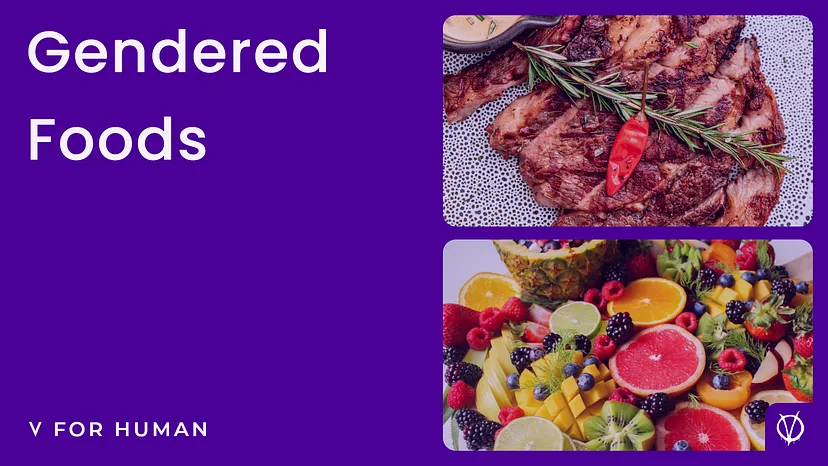Gendered Foods
Is eating as simple as we think? Is it just a routine or is it a different set of facts?
We answer that eating is not just a routine and that there are some different phenomena underlying it.
Before we start our article, we need to ask ourselves the following question: Does the food have a gender?
Gendered foods refer to the division of foodstuffs into “masculine” or “feminine”. The basis of this distinction is based on traditional gender roles and expectations that certain foods are considered appropriate for men and others for women. The gendering of foods has been a phenomenon in societies for centuries, and today, foods are gendered. However, the genderization of food has a problematic structure and is questioned by many individuals who view food as inclusive.
Generally, animal-origin foods like steak and vegetables like potatoes are seen as “masculine”, while light foods like salads and pastries are seen as “feminine”. This division of foods is often reflected in food advertisements. Advertising companies usually determine the gender group that will use the product, and then prepare suitable advertising content for them. For example, beer ads usually are aimed at men, while diet or “light” food ads are aimed at women. This reinforces the idea that certain foods are more desirable or appropriate for one gender over the other.
We have noted that this distinction is problematic in some respects. First, this distinction perpetuates strict gender norms and creates stereotypes about what men and women can and cannot eat. This may cause individuals to comply with gender norms and to make food choices that are “appropriate” for their gender and limit their choices. For example, a man may be embarrassed to order a salad, which is seen as a “feminine” food, and a woman may be embarrassed to order a steak, a food that is seen as a “masculine” food. Even if they are not ashamed, they may think that the people around them see them as less “female” or less “man”. You can watch the video below on this topic.
On the other hand, this distinction can lead to the development of unhealthy eating habits and a negative relationship with food. A woman subconsciously influenced by advertisements for diet foods and supplements may become obsessed with weight loss. On the other hand, a man who constantly consumes animal-based food may encounter various health problems due to excessive protein intake. In other words, “gendered foods” can cause individuals to misunderstand what a balanced and healthy diet is. It should be noted that individuals who reject the idea of gender food and adopt that we should look at food with a more inclusive approach. By challenging traditional gender norms, we must destroy harmful and unhealthy clichés and direct individuals to a food culture that should be healthier.
For more information on the subject, see:
1. Alison N. C. Reiheld. Gender Norms and Food Behavior.
2. Jackie Goode. Women, men and food: The significance of gender for nutritional attitudes and choices.
3. Yue Zhao. Analysis of the Gender Stereotypes on Food Preferences.
4. Carole Counihan, Steven L. Kaplan. Food and Gender: Identity and Power


